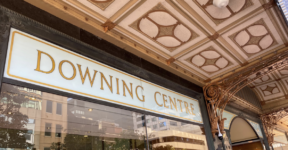What is A Voir Dire?

A lot of legal jargon is outdated, confusing, unnecessary and even counter-productive to ensuring the law is comprehensible to all people – whether represented by a lawyer or self-represented – and that access to justice is fair, regardless of whether a person has gone to law school and learned a few fancy terms.
But, sadly, legal practitioners including solicitors, barristers, magistrates and judges continue to used legalese inside the courtroom, potentially causing unnecessary confusion for those who chose a path other than the practise of law.
In any event, antiquated terms such as “voir dire” continue to pervade the law to the present day, and with a profession slow to embrace relevance, here’s an explanation of where the term comes from and what it describes.
A voir dire is a hearing on a point of law before or during a hearing or trial
A direct translation of “voir dire” (pronounced: v-wah dear) from its Old French origins is “to speak the truth”. Today, it most commonly refers to a particular type of legal hearing where a question of law is decided.
A voir dire is essentially “a trial within trial” where matters of evidence are heard by a judge without the presence of a jury (or even pre-trial, before a jury has been empanelled).
Either the prosecution or the defence in a criminal proceeding can request a voir dire and it’s up to the judge whether to grant the special hearing.
Much like a trial, a voir dire may involve the calling of witnesses to give evidence and a judgement will hear legal arguments from both sides before making a decision.
What issues are covered in a voir dire?
Section 189 of the Evidence Act 1995 (NSW) outlines that a voir dire is to be used to determine questions such as whether:
- evidence should be admitted (whether in the exercise of a discretion or not), or
- evidence can be used against a person, or
- a witness is competent or compellable.
There are strict rules outlined throughout the Evidence Act 1995 (NSW) about what kind of evidence can be given during a criminal trial and in what way, and these form of the basis of the voir dire.
Some of the common types of evidence that may be subject to a voir dire are:
- Statements made by the accused to witnesses or investigators adverse to their interests at trial (also known as “admissions”).
- Hearsay evidence.
- Potentially unlawful or improperly obtained evidence (such as an illegal search).
- Witness evidence where privilege is being claimed for part or all of the evidence to be given.
- Evidence that is very prejudicial to the accused, but of little probative value to the criminal matter (such as a history of adultery).
What can result?
Once a judge has considered all evidence given by witnesses during the voir dire and heard arguments from both sides, they will make a decision as to whether the witness or a piece of evidence should be presented at trial.
Possible decisions include:
- That the evidence is not admissible;
- That the evidence is admissible in full;
- That the evidence is also partially admissible, with limits on how it should be presented.






